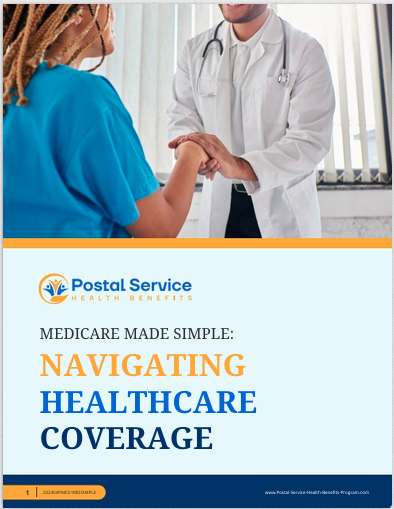Key Takeaways
-
Not everyone with ties to USPS automatically qualifies for PSHB. Eligibility depends on your employment status, retirement date, Medicare enrollment, and other factors.
-
Mistaking eligibility could lead to coverage gaps. Understanding when and how you’re eligible ensures you maintain access to vital health benefits during and after your USPS career.
Understanding PSHB in 2025
The Postal Service Health Benefits (PSHB) Program officially replaced the Federal Employees Health Benefits (FEHB) Program for eligible Postal Service employees, retirees, and their family members as of January 1, 2025. While this transition has been underway since 2022, eligibility criteria are still misunderstood by many.
Unlike FEHB, where eligibility was broadly defined for most federal employees and retirees, PSHB introduces unique eligibility categories, timelines, and mandatory Medicare enrollment rules for certain retirees. Missing even one requirement could mean losing access to your plan until the next open season—or worse, losing coverage entirely.
Who Is Eligible for PSHB in 2025?
You may assume you’re covered simply because you work for or retired from USPS, but eligibility for PSHB depends on specific conditions:
1. Current Postal Employees
If you’re currently employed by the United States Postal Service, you are eligible to enroll in a PSHB plan. Enrollment is typically completed through USPS’s human resources platform, LiteBlue, during open season or after a qualifying life event (QLE).
You remain eligible as long as you maintain:
-
A current employment status with USPS
-
Premium payments through payroll deductions
2. USPS Retirees and Annuitants
Retirees are eligible to enroll in PSHB if they:
-
Retired from USPS under an immediate retirement annuity
-
Are receiving or are entitled to receive a Civil Service Retirement System (CSRS) or Federal Employees Retirement System (FERS) annuity
-
Were continuously enrolled in an FEHB or PSHB plan for the 5 years before retirement (or since their first opportunity to enroll)
However, retirees must also meet Medicare integration requirements, especially concerning Part B.
3. Family Members
The following family members may be eligible for coverage under your PSHB enrollment:
-
Spouse
-
Children under age 26 (biological, adopted, stepchildren, foster children with court documentation)
-
Children over age 26 with a certified disability who are incapable of self-support
Coverage does not automatically extend to former spouses. Legal documentation, such as a divorce decree or court order, must clearly outline whether continued coverage applies.
Special Requirement: Medicare Part B Enrollment
One of the most confusing aspects of PSHB eligibility for retirees is the new Medicare Part B mandate.
As of January 1, 2025, retirees and covered family members who are eligible for Medicare must enroll in Medicare Part B to keep their PSHB coverage, unless they qualify for an exception.
Exceptions to the Part B Requirement
You may be exempt from the Part B requirement if:
-
You retired on or before January 1, 2025
-
You are an active USPS employee (regardless of age)
-
You are age 64 or older as of January 1, 2025
-
You reside outside the United States and are ineligible for Medicare
-
You are covered under Veterans Affairs or Indian Health Service benefits
Failing to enroll in Part B if you are subject to the requirement means you will lose your PSHB coverage. There is no grace period after the implementation date.
Enrollment Isn’t Automatic for Everyone
While USPS employees and annuitants were generally auto-enrolled into a comparable PSHB plan for 2025 if they already had FEHB, this isn’t always guaranteed.
You need to confirm:
-
That your existing FEHB coverage transitioned to a PSHB plan
-
That your covered dependents are still listed
-
That you’ve met the Medicare Part B requirements if applicable
If any of these components are missing, your PSHB enrollment may be considered incomplete or invalid.
What If You Missed Open Season?
The 2024 PSHB Open Season ran from November to December. If you didn’t make changes or confirm your enrollment by the deadline, you may have been auto-enrolled—but only if you met all eligibility requirements.
If you missed open season and are:
-
Newly eligible
-
Experiencing a qualifying life event
-
Retiring mid-year
…you may qualify for a Special Enrollment Period (SEP). SEPs typically allow 31 to 60 days to enroll from the date of the triggering event. If you miss this window, you’ll need to wait until the next Open Season.
Losing Eligibility Mid-Year
Your PSHB eligibility doesn’t last forever. You can lose coverage mid-year if:
-
You cancel your Part B enrollment (if required)
-
You divorce and fail to update your coverage
-
A covered child turns 26 without qualifying for extended dependent status
-
You stop paying premiums
Each of these events can result in termination of coverage, often without the ability to re-enroll until the next Open Season. Make sure your information and documents are always up to date.
Dual-Eligibility Doesn’t Guarantee PSHB Access
If you qualify for both PSHB and other federal benefits (like TRICARE or Medicaid), it’s important to note that eligibility for one program doesn’t guarantee eligibility for another. In fact, in many cases, you may be required to choose only one form of federal health coverage.
Also, TRICARE coverage does not make you exempt from PSHB’s Medicare Part B requirement unless you are also retired military and not relying on PSHB as your primary insurance.
Avoiding Common Mistakes in 2025
To keep your PSHB coverage active and uninterrupted, make sure you:
-
Confirm your Medicare Part B enrollment status if over 65
-
Check that your dependents still qualify and are properly listed
-
Understand your eligibility based on retirement date
-
Monitor your address and residency if you live abroad
-
Pay attention to Open Season and SEP windows
If you are unsure about any of these elements, seek assistance. The PSHB system will not assume eligibility—it requires active participation and verification.
How to Confirm Your Status
To confirm your PSHB eligibility, take the following steps:
-
Active Employees: Use the USPS LiteBlue portal to view and manage your enrollment
-
Annuitants: Log into the OPM Retirement Services Online portal or visit KeepingPosted.org
-
Medicare Enrollees: Review your enrollment at Medicare.gov and coordinate with your PSHB plan
It’s best to set calendar reminders for Open Season and Part B enrollment deadlines, and keep all confirmation emails and letters from OPM or USPS.
Why Clarity Matters More in 2025
The rollout of PSHB introduces stricter rules, narrower exceptions, and tighter enrollment timelines compared to FEHB. In 2025, the rules are actively enforced, and confusion is not accepted as a valid excuse for missing eligibility steps.
Even though it’s a federal benefit, PSHB operates under distinct legislation passed in 2022, which separates it from standard federal benefits. If you previously assumed your FEHB status would simply transfer without action, it’s time to verify your PSHB status directly.
Stay Covered, Stay Compliant
PSHB eligibility in 2025 isn’t automatic, and it’s not something you can afford to overlook. Whether you’re a current USPS employee, a new retiree, or someone thinking ahead to Medicare, clarity on your eligibility status could mean the difference between full coverage and costly gaps.
Don’t make assumptions. Get in touch with a licensed agent listed on this website to confirm your eligibility, get help with enrollment, and make sure you’re fully protected throughout the year.





